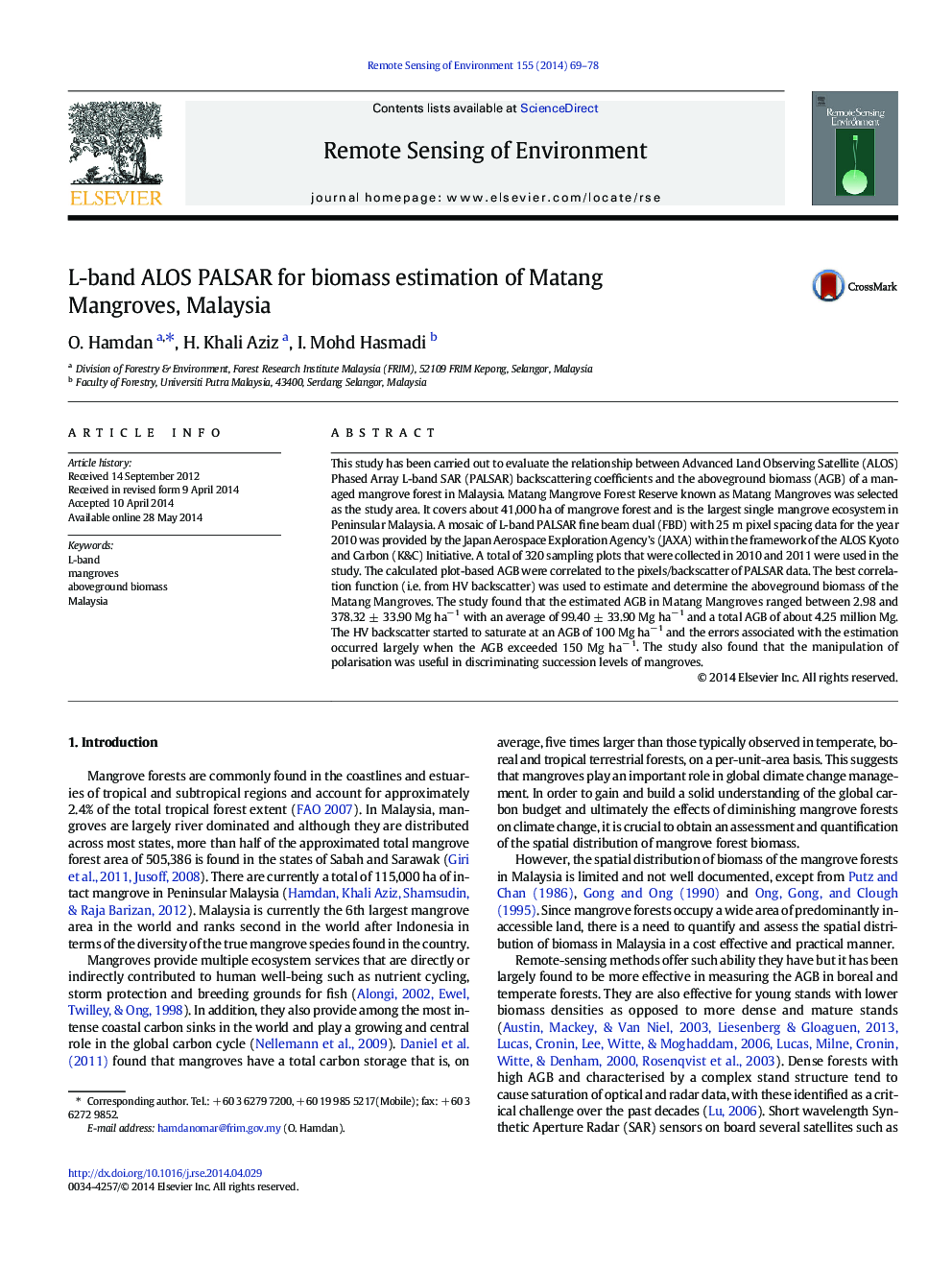| Article ID | Journal | Published Year | Pages | File Type |
|---|---|---|---|---|
| 6346590 | Remote Sensing of Environment | 2014 | 10 Pages |
â¢L-band PALSAR has succesfully quantified aboveground biomass at Matang Mangroves.â¢HV polarization of L-band started to sature at 100 Mg haâ 1 of aboveground biomass.â¢The errors associated to the estimation occurred largely at AGB > 150 Mg haâ 1.â¢Manipulation of polarisations was less useful in biomass estimation of mangroves.
This study has been carried out to evaluate the relationship between Advanced Land Observing Satellite (ALOS) Phased Array L-band SAR (PALSAR) backscattering coefficients and the aboveground biomass (AGB) of a managed mangrove forest in Malaysia. Matang Mangrove Forest Reserve known as Matang Mangroves was selected as the study area. It covers about 41,000 ha of mangrove forest and is the largest single mangrove ecosystem in Peninsular Malaysia. A mosaic of L-band PALSAR fine beam dual (FBD) with 25 m pixel spacing data for the year 2010 was provided by the Japan Aerospace Exploration Agency's (JAXA) within the framework of the ALOS Kyoto and Carbon (K&C) Initiative. A total of 320 sampling plots that were collected in 2010 and 2011 were used in the study. The calculated plot-based AGB were correlated to the pixels/backscatter of PALSAR data. The best correlation function (i.e. from HV backscatter) was used to estimate and determine the aboveground biomass of the Matang Mangroves. The study found that the estimated AGB in Matang Mangroves ranged between 2.98 and 378.32 ± 33.90 Mg haâ 1 with an average of 99.40 ± 33.90 Mg haâ 1 and a total AGB of about 4.25 million Mg. The HV backscatter started to saturate at an AGB of 100 Mg haâ 1 and the errors associated with the estimation occurred largely when the AGB exceeded 150 Mg haâ 1. The study also found that the manipulation of polarisation was useful in discriminating succession levels of mangroves.
